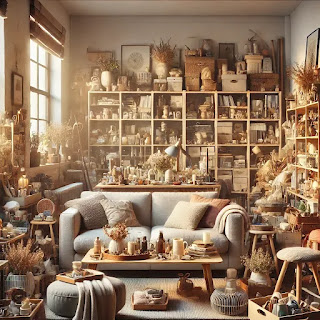Year-End Decluttering: A Fresh Start for Your Home and Mind
As the year draws to a close, it offers the perfect opportunity to reset—not just mentally, but also physically by reorganizing your living space. Year-end decluttering is more than tidying up; it’s a symbolic gesture of letting go of the old and making room for new beginnings. By clearing out the unnecessary, you’ll not only create a more functional home but also cultivate a sense of calm and clarity as you step into the new year.
Decluttering has profound benefits for both your environment and your well-being. A clutter-free space has been linked to reduced stress and improved focus, offering mental clarity in ways you might not expect. Letting go of items you no longer use can also be a thoughtful gesture—donating gently used belongings to those in need extends their life and contributes to a more sustainable lifestyle. At the heart of it, decluttering is a powerful act of mindfulness, reminding us to cherish what we truly value while releasing what no longer serves us.
Starting the process may seem overwhelming, but it doesn’t have to be. Begin with small, manageable areas like a drawer or a corner of your closet. As you sort through your belongings, ask yourself if each item brings you joy or serves a purpose. If the answer is no, it may be time to let it go. Adopting a systematic approach—such as sorting items into categories of “keep,” “donate,” or “discard”—can make the process smoother and more efficient.
The end of the year is also an ideal moment to involve your family in decluttering. It can become a shared ritual, a way to bond while working together toward a common goal. Children can learn the value of gratitude and giving by donating toys they’ve outgrown, while adults might find it refreshing to clear out items that no longer align with their current needs or lifestyle.
There’s a certain joy in finishing the year with a home that feels lighter and more organized. As you clear out the physical clutter, you may notice a surprising mental shift—a sense of readiness to embrace new experiences and opportunities in the year ahead. Decluttering isn’t just about removing objects; it’s about creating space for growth, creativity, and peace.
So, as the year ends, take a moment to declutter your home and mind. Start small, and let the process guide you toward a simpler, more intentional way of living. It’s a gift to yourself, one that promises both immediate and lasting benefits.


.webp)






